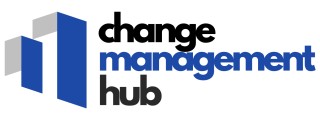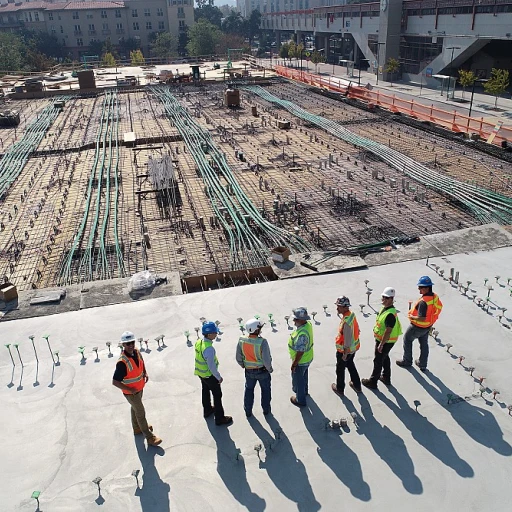-large-teaser.webp)
Understanding Change Management in Procurement
Grasping the Basics of Change Management in Procurement
Change management is a critical component in optimizing procurement processes from start to finish. It involves a structured approach to transitioning individuals, teams, and organizations from a current state to a desired future state. In the realm of procurement, this means effectively managing the procurement lifecycle to enhance supplier performance, achieve cost savings, and improve overall efficiency.
Understanding change management in procurement is essential for procurement leaders aiming to implement strategic sourcing and category management. It requires a deep dive into the procurement process, identifying where changes can lead to improved supplier performance and cost savings. This involves a comprehensive understanding of the supply chain and the strategic role procurement plays in business operations.
The Role of Procurement in Business Strategy
Procurement is not just about purchasing goods and services; it is a strategic function that can significantly impact a company's bottom line. Effective procurement strategies can lead to substantial cost savings and risk management improvements. By aligning procurement strategies with business goals, organizations can ensure that their procurement processes support their overall business strategy.
To achieve this, procurement leaders must focus on strategic sourcing and the integration of technology to enhance procurement efficiency. This involves leveraging technology to streamline the procurement process, enabling real-time data analysis and decision-making. Such technological advancements can transform procurement from a tactical function to a strategic asset.
Implementing Best Practices in Procurement
Implementing best practices in procurement is crucial for optimizing procurement processes. This includes adopting a cross-functional approach to procurement, involving stakeholders from various departments to ensure a holistic view of the procurement process. Engaging stakeholders in the change process is vital for successful procurement transformation.
Additionally, managed services can play a significant role in enhancing procurement efficiency. By outsourcing certain procurement functions, organizations can focus on strategic activities that add value to the business. This approach not only improves efficiency but also allows for better risk management and cost control.
For a deeper understanding of how to craft a comprehensive project requirements document, which is essential for effective change management in procurement, visit this resource.
Identifying Key Challenges in Procurement Transformation
Recognizing the Core Challenges in Procurement Overhaul
When embarking on a procurement transformation journey, organizations often encounter several hurdles that can impede progress. Tackling these challenges head-on is crucial for achieving desired outcomes in terms of efficiency and cost-effectiveness. Understanding the inherent obstacles in the procurement process can provide a roadmap to successful change management.
Complexity of Supply Chains
Supply chains are intricate networks involving numerous stakeholders, from suppliers to business partners. This complexity often results in increased risk and susceptibility to inefficiencies that can derail procurement efforts. Therefore, strategic sourcing and category management become vital components in streamlining these processes. Identifying the critical points where the chain management can falter helps in crafting effective strategies to mitigate disruptions.
Resistance to Change
One of the most common obstacles faced during the transformation is resistance from stakeholders, which can hinder progress significantly. A cross-functional approach that includes all relevant parties early in the change process can ease this challenge. By fostering a sense of involvement, organizations can mitigate pushback and encourage a more collaborative atmosphere conducive to change.
Balancing Cost and Performance
The need to achieve cost savings often conflicts with maintaining high supplier performance. Procurement leaders must not only negotiate contracts but also strategically manage supplier relationships to align with organizational goals. By focusing on long-term partnerships and contract management, companies can optimize both costs and service quality.
Leveraging Data and Technology
As procurement becomes more reliant on digital solutions, leveraging technology becomes both a challenge and an opportunity. While the integration of real-time data can significantly enhance visibility across the procurement lifecycle, it also requires infrastructure and a mindset open to technological adaptation. Organizations must assess their technology readiness to ensure that the adoption of new tools drives true value improvement.
In conclusion, identifying and understanding these key challenges in procurement transformation lays the groundwork for successful change management. With strategic planning and consideration of all facets of the procurement lifecycle, businesses can turn potential impediments into opportunities for improvement and growth.
Strategies for Effective Change Management
Crafting a Strategic Direction for Transformation
When managing change within procurement processes, the strategies employable not only ensure smooth transitions but also optimize performance. Here are a few key approaches to guide successful procurement transformation:
Establish Clear Objectives and Goals
Defining specific goals is essential in the change management journey. Determine what the end procurement process should achieve and align those goals with the overall business strategy. Identifying objectives, such as cost savings, supplier performance improvements, or strategic sourcing enhancements, lays a firm foundation.
Implement Category Management
Managing procurement activities under specific categories allows for better focus and strategic sourcing. Category management streamlines the process, aiding in risk mitigation and enhancing supplier relationships. This proactive management is key in boosting efficiency and achieving procurement goals.
Adopt Flexible Procurement Strategies
A flexible procurement strategy enables organizations to adapt swiftly to changes within the supply chain and market conditions. Tailor strategies to suit different categories and adjust accordingly to ensure seamless procurement services delivery. An adaptable strategy facilitates cross-functional collaboration and optimizes chain management.
Utilize Managed Services for Enhanced Efficiency
Leveraging managed services can be a game-changer in procurement transformations. Service providers bring expertise, freeing internal resources to focus on strategic initiatives. By outsourcing certain procurement activities, companies improve process efficiency and drive cost reductions.
Foster Strategic Supplier Relationships
A strategic approach to supplier engagement not only ensures high supplier performance but also strengthens the supply chain network. Developing long-term partnerships creates a collaborative environment where innovation thrives. Regularly assess supplier performance using key metrics to maintain momentum towards achieving cost savings and process improvements. For further insights on implementing successful strategies, read more here where maximizing synergy in processes is explored comprehensively. Implementing these strategies systematically will help in enhancing procurement processes and aligning them closely with overarching business objectives, ensuring a robust and resilient supply chain network.
Leveraging Technology in Procurement
Integrating Technology for Seamless Procurement
In today's fast-paced business environment, leveraging technology is essential for optimizing procurement processes. The integration of advanced tools can significantly enhance efficiency, reduce costs, and streamline the entire procurement lifecycle. Here are some ways technology can be a game-changer in procurement management:
- Automation of Routine Tasks: Automating repetitive tasks such as order processing and invoice management can free up valuable time for procurement leaders to focus on strategic sourcing and supplier performance. This not only improves efficiency but also reduces the risk of human error.
- Real-Time Data Access: Implementing technology that provides real-time data access allows procurement teams to make informed decisions quickly. This is crucial for managing supply chain risks and ensuring that procurement strategies align with business objectives.
- Enhanced Supplier Collaboration: Digital platforms facilitate better communication and collaboration with suppliers. This can lead to improved supplier performance and more effective contract management, ultimately driving cost savings and enhancing the procurement process.
- Strategic Category Management: Technology can support category management by providing insights into spending patterns and supplier markets. This enables procurement teams to develop more effective procurement strategies and optimize sourcing decisions.
By embracing technology, businesses can transform their procurement processes from end to end, ensuring that they remain competitive in a rapidly evolving market. As discussed in previous sections, understanding the challenges and strategies in procurement transformation is key to successful change management.
Engaging Stakeholders in the Change Process
Gaining Collective Support for Seamless Change
Engaging stakeholders is a pivotal element in steering change management within the procurement process. Achieving success often hinges on the ability to gain commitment from all parties involved, from suppliers to internal teams. Here's how to effectively involve stakeholders:- Identify Key Stakeholders: Early identification of crucial players within the supply chain, including suppliers and cross-functional business units, ensures everyone is aware of and prepared for changes in category management or strategic sourcing.
- Open Communication Channels: Establish transparent communication pathways that allow for real-time feedback and dialogue. This can mitigate risks and optimize processes, improving supplier performance and procurement strategies over time.
- Provide Education and Training: Equip all stakeholders with the necessary knowledge and tools to manage changes within the procurement lifecycle. Understanding the end-to-end procurement processes is crucial for effective category management and cost savings.
- Collaborate on Strategic Objectives: Align procurement strategies with broader business goals to ensure a seamless transition and enhanced efficiency. Collaborative strategy sessions can help clarify objectives and performance expectations at all stages of the supply chain.
- Leverage Feedback Loops: Regularly solicit stakeholder input to refine processes and strategies. Leveraging technology can advance this effort by providing platforms for continuous improvement and innovation.
Measuring Success in Procurement Change Initiatives
Evaluating the Impact of Change
Measuring success in procurement change initiatives is crucial for ensuring that the strategies implemented are effective and sustainable. The process begins with evaluating the impact of change across the procurement lifecycle. This involves assessing how changes in procurement processes have influenced supplier performance, cost savings, and overall efficiency.
Key Performance Indicators (KPIs)
To effectively measure success, procurement leaders should establish clear KPIs. These indicators might include metrics related to cost reduction, contract compliance, and strategic sourcing effectiveness. Tracking these KPIs provides insights into the efficiency of the procurement process and helps in identifying areas that require further optimization.
Feedback and Continuous Improvement
Engaging stakeholders, as discussed earlier, is vital for gathering feedback on the changes implemented. This feedback loop allows for continuous improvement, ensuring that the procurement strategies remain aligned with the business objectives. Regularly reviewing and adjusting strategies based on stakeholder input is a best practice in procurement management.
Technology's Role in Measurement
Leveraging technology is essential for real-time monitoring and reporting. Advanced procurement software can provide detailed analytics and dashboards that offer a comprehensive view of the supply chain and procurement performance. These tools facilitate data-driven decision-making, enhancing the strategic value of procurement services.
Risk Management and Adaptation
Finally, measuring success also involves assessing how well the procurement process adapts to risks and changes in the supply chain. Effective risk management strategies, as highlighted in previous sections, are crucial for maintaining a resilient procurement strategy. By continuously evaluating risk factors and adapting strategies accordingly, businesses can ensure long-term success in their procurement initiatives.













